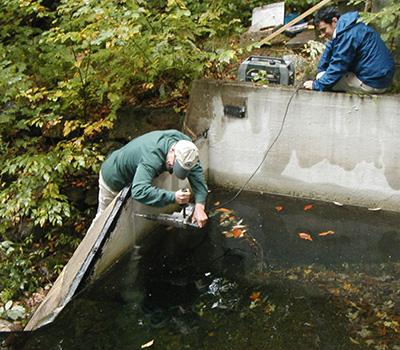Climate Controls on Organic Carbon Flux from Northern Forest Watersheds

In response to global change, dissolved organic carbon (DOC) is increasing in Northern Forest streams. Increases may be “canary in the coal mine” signals of shifts in carbon storage and cycling in watersheds. Global change triggers alterations in: timing and location of precipitation; temperature-related effects on soil geochemistry; vegetation; and catastrophic events (fire, insect defoliation). These phenomena directly affect the character and quantity of organic matter in surface waters, which in turn affect aquatic ecosystem productivity.
In a previous NSRC study, researchers demonstrated that installing real-time organic matter fluorescence sensors at three Northern Forest watersheds is a valid way to measure DOC. Because changes in DOC concentrations and yields mirror changes in ecosystem processes sensitive to climate change, the current study better quantified stream DOC in watersheds and used natural climatic variation to project the magnitude and direction of future DOC shifts. NSRC researchers continued measurements at: Arbutus Inlet, NY; Sleepers River, VT; and Hubbard Brook, NH.
DOC concentrations at all sites showed dynamic increases during high flows. Fluorescent dissolved organic matter closely tracked discharge, suggesting that rainfall, snowmelt, and rising groundwater levels mobilize DOC from organic-rich soils near streams and in the forest floor. In-stream fluorometers greatly enhance acquisition of DOC and detail its response to stream flow, which gives clues about what is driving DOC dynamics and improves our understanding of the Northern Forest carbon cycle and its response to climatic stressors. A critical reason to monitor DOC is that too much DOC entering public water supply can cause formation of disinfection byproducts, which can pose health risks.
Download printable version (PDF)
Download full final report (PDF)
